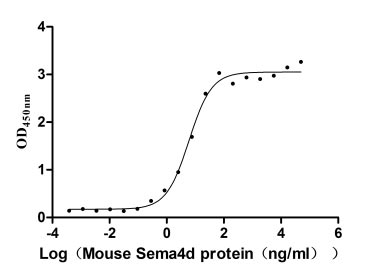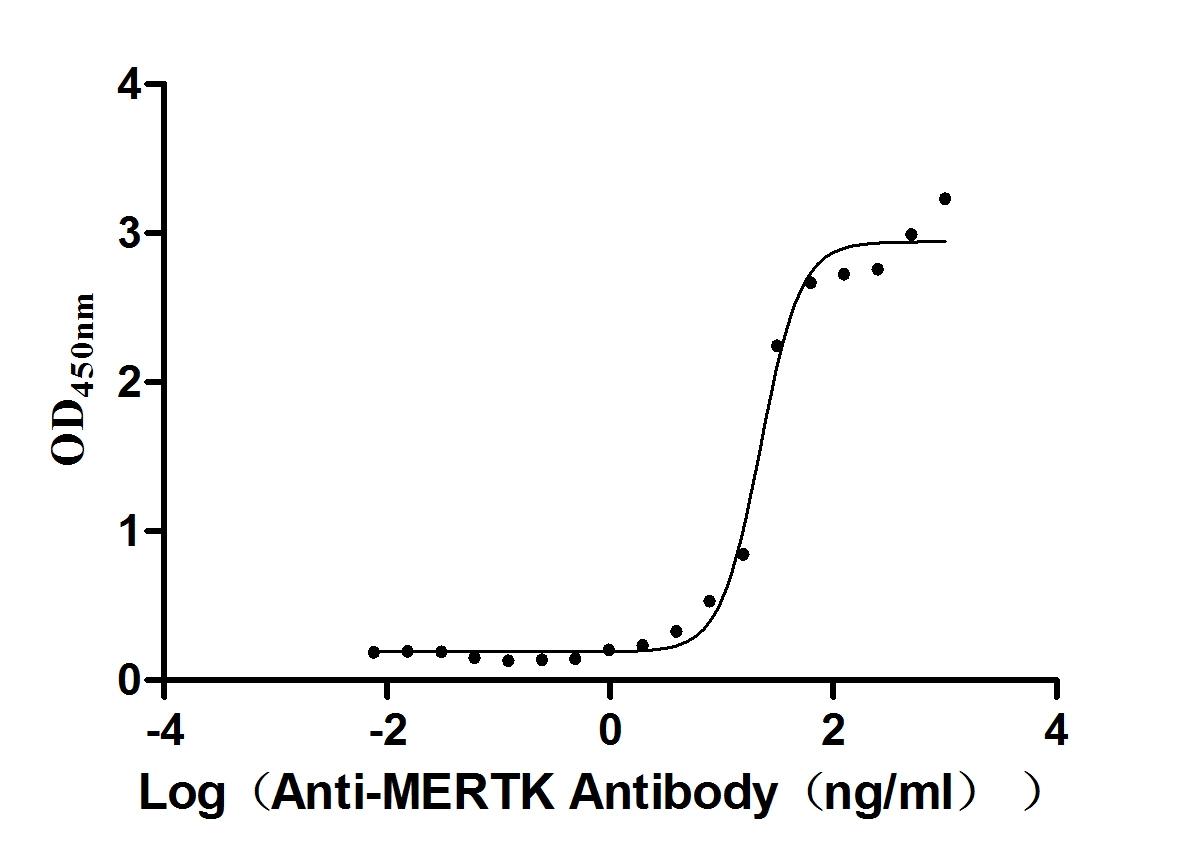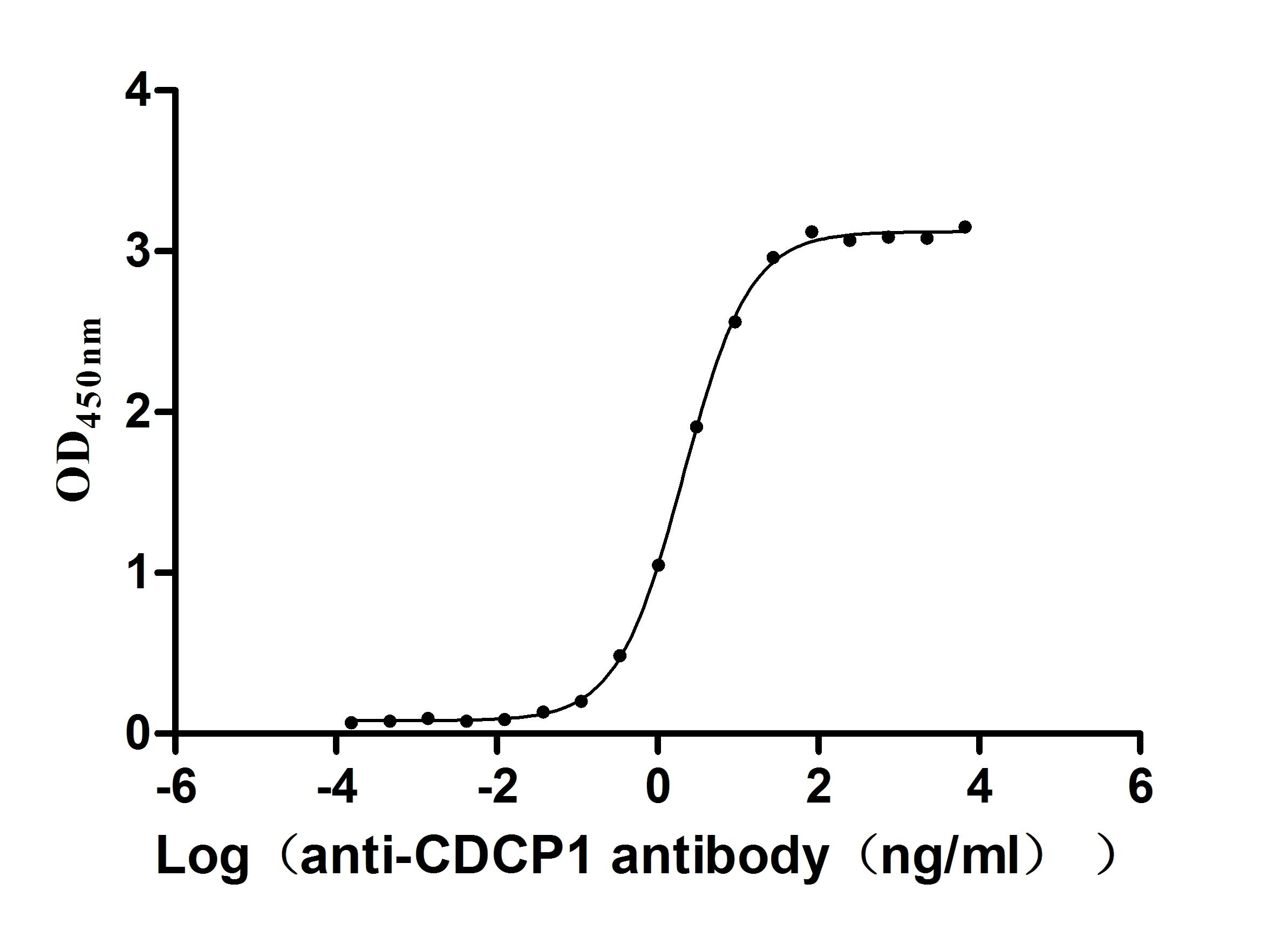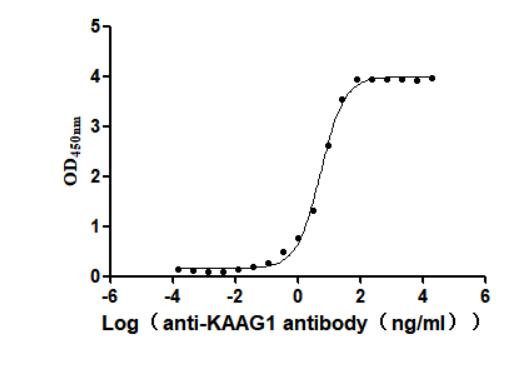Recombinant Human Gigaxonin (GAN)
-
货号:CSB-YP009228HU
-
规格:
-
来源:Yeast
-
其他:
-
货号:CSB-EP009228HU
-
规格:
-
来源:E.coli
-
其他:
-
货号:CSB-EP009228HU-B
-
规格:
-
来源:E.coli
-
共轭:Avi-tag Biotinylated
E. coli biotin ligase (BirA) is highly specific in covalently attaching biotin to the 15 amino acid AviTag peptide. This recombinant protein was biotinylated in vivo by AviTag-BirA technology, which method is BriA catalyzes amide linkage between the biotin and the specific lysine of the AviTag.
-
其他:
-
货号:CSB-BP009228HU
-
规格:
-
来源:Baculovirus
-
其他:
-
货号:CSB-MP009228HU
-
规格:
-
来源:Mammalian cell
-
其他:
产品详情
-
纯度:>85% (SDS-PAGE)
-
基因名:GAN
-
Uniprot No.:
-
别名:FLJ38059; GAN (gene name); GAN; GAN_HUMAN; GAN1 (gene name); Gigaxonin; Kelch-like protein 16; KLHL16
-
种属:Homo sapiens (Human)
-
蛋白长度:full length protein
-
表达区域:1-597
-
氨基酸序列MAEGSAVSDP QHAARLLRAL SSFREESRFC DAHLVLDGEE IPVQKNILAA ASPYIRTKLN YNPPKDDGST YKIELEGISV MVMREILDYI FSGQIRLNED TIQDVVQAAD LLLLTDLKTL CCEFLEGCIA AENCIGIRDF ALHYCLHHVH YLATEYLETH FRDVSSTEEF LELSPQKLKE VISLEKLNVG NERYVFEAVI RWIAHDTEIR KVHMKDVMSA LWVSGLDSSY LREQMLNEPL VREIVKECSN IPLSQPQQGE AMLANFKPRG YSECIVTVGG EERVSRKPTA AMRCMCPLYD PNRQLWIELA PLSMPRINHG VLSAEGFLFV FGGQDENKQT LSSGEKYDPD ANTWTALPPM NEARHNFGIV EIDGMLYILG GEDGEKELIS MECYDIYSKT WTKQPDLTMV RKIGCYAAMK KKIYAMGGGS YGKLFESVEC YDPRTQQWTA ICPLKERRFG AVACGVAMEL YVFGGVRSRE DAQGSEMVTC KSEFYHDEFK RWIYLNDQNL CIPASSSFVY GAVPIGASIY VIGDLDTGTN YDYVREFKRS TGTWHHTKPL LPSDLRRTGC AALRIANCKL FRLQLQQGLF RIRVHSP
-
蛋白标签:Tag type will be determined during the manufacturing process.
The tag type will be determined during production process. If you have specified tag type, please tell us and we will develop the specified tag preferentially. -
产品提供形式:Lyophilized powder
Note: We will preferentially ship the format that we have in stock, however, if you have any special requirement for the format, please remark your requirement when placing the order, we will prepare according to your demand. -
复溶:We recommend that this vial be briefly centrifuged prior to opening to bring the contents to the bottom. Please reconstitute protein in deionized sterile water to a concentration of 0.1-1.0 mg/mL.We recommend to add 5-50% of glycerol (final concentration) and aliquot for long-term storage at -20℃/-80℃. Our default final concentration of glycerol is 50%. Customers could use it as reference.
-
储存条件:Store at -20°C/-80°C upon receipt, aliquoting is necessary for mutiple use. Avoid repeated freeze-thaw cycles.
-
保质期:The shelf life is related to many factors, storage state, buffer ingredients, storage temperature and the stability of the protein itself.
Generally, the shelf life of liquid form is 6 months at -20°C/-80°C. The shelf life of lyophilized form is 12 months at -20°C/-80°C. -
货期:Delivery time may differ from different purchasing way or location, please kindly consult your local distributors for specific delivery time.Note: All of our proteins are default shipped with normal blue ice packs, if you request to ship with dry ice, please communicate with us in advance and extra fees will be charged.
-
注意事项:Repeated freezing and thawing is not recommended. Store working aliquots at 4°C for up to one week.
-
Datasheet :Please contact us to get it.
相关产品
靶点详情
-
功能:Probable cytoskeletal component that directly or indirectly plays an important role in neurofilament architecture. May act as a substrate-specific adapter of an E3 ubiquitin-protein ligase complex which mediates the ubiquitination and subsequent proteasomal degradation of target proteins. Controls degradation of TBCB. Controls degradation of MAP1B and MAP1S, and is critical for neuronal maintenance and survival.
-
基因功能参考文献:
- Our protocol showed high specificity and sensitivity for homozygosity detection and facilitated the identification of novel mutations in GAN, GBA2, and ZFYVE26 in four families affected by hereditary spastic paraplegia or Charcot-Marie-Tooth disease PMID: 26492578
- We believe that molecular and functional investigation of gigaxonin mutations including the exon 8 polymorphism could lead to an improved understanding of the relationship between GAN and cancer PMID: 27023907
- A novel sequence alteration in the gene GAN, c.103G > T, was identified as most likely the underlying cause for a sensory-motor axonal neuropathy in a large consanguineous family presenting as Charcot-Marie-Tooth disease type 2. PMID: 27852232
- a proteomic screen to identify the normal binding partners of GIG, is reported. PMID: 26460568
- The disease is caused by GAN gene mutations on chromosome 16q24.1. To determine clinical and genetic results in Turkish patients with GAN. PMID: 25533284
- This study showed that The instability of Gigaxonin causes Giant Axonal Neuropathy. PMID: 24758703
- A novel missense mutation in four siblings born to consanguineous parents of Arab origin with clinical and molecular features compatible with giant axonal neuropathy. PMID: 23332420
- gigaxonin is a major factor in the degradation of cytoskeletal intermediate filaments PMID: 23585478
- No GAN variant is identified in DNA obtained from well-characterized cases of human neuronal intermediate filament inclusion disease (frontotemporal dementia). PMID: 19782434
- Gigaxonin interacts with tubulin folding cofactor B and controls its degradation through the ubiquitin-proteasome pathway. PMID: 16303566
- Ubiquitin-proteasome system shown to be responsible for neurodegeneration occurring in GAN-null neurons and plays crucial roles in cytoskeletal functions and dynamics. PMID: 17256086
- 3 new mutants were found in patients with giant axonal neuropathy: an intronic mutation near the splice donor site of intron 2 & a missense mutation in exon 3 (I182N), & 2 identical deletion alleles. PMID: 17331252
- Five families with GAN for mutations in the Gigaxonin gene and mutations were found in four families; three families had homozygous mutations, one had two compound heterozygous mutations and one family had no mutation identified. PMID: 17578852
- gigaxonin mutations impede this ubiquitin degradation process leading to accumulation of microtubule associated proteins and there by impairing cellular functions PMID: 17587580
- a functional important part of the gigaxonin protein is altered by the AluYa5 insertion and causes giant axonal neuropathy [case report] PMID: 18595793
- Study shows that the gigaxonin E3 ligase subunit is normally expressed at a very low level and that various missense and nonsense mutations scattered across the entire GAN gene produce highly unstable protein products. PMID: 19168853
显示更多
收起更多
-
相关疾病:Giant axonal neuropathy 1, autosomal recessive (GAN1)
-
亚细胞定位:Cytoplasm. Cytoplasm, cytoskeleton.
-
组织特异性:Expressed in brain, heart and muscle.
-
数据库链接:
HGNC: 4137
OMIM: 256850
KEGG: hsa:8139
STRING: 9606.ENSP00000248272
UniGene: Hs.112569
Most popular with customers
-
Recombinant Macaca fascicularis Angiotensin-converting enzyme (ACE2), partial (Active)
Express system: Mammalian cell
Species: Macaca fascicularis (Crab-eating macaque) (Cynomolgus monkey)
-
Recombinant Mouse Semaphorin-4D (Sema4d), partial (Active)
Express system: Mammalian cell
Species: Mus musculus (Mouse)
-
Recombinant Mouse Tyrosine-protein kinase Mer (Mertk), partial (Active)
Express system: Mammalian cell
Species: Mus musculus (Mouse)
-
Recombinant Human Interleukin-17A (IL17A) (T26A) (Active)
Express system: Baculovirus
Species: Homo sapiens (Human)
-
Recombinant Mouse Cell adhesion molecule 1 (Cadm1), partial (Active)
Express system: Mammalian cell
Species: Mus musculus (Mouse)
-
Recombinant Human C-type lectin domain family 4 member C (CLEC4C), partial (Active)
Express system: Mammalian cell
Species: Homo sapiens (Human)
-
Recombinant Macaca fascicularis CUB domain containing protein 1 (CDCP1), partial (Active)
Express system: Mammalian cell
Species: Macaca fascicularis (Crab-eating macaque) (Cynomolgus monkey)
-
Recombinant Human Kidney-associated antigen 1(KAAG1) (Active)
Express system: Baculovirus
Species: Homo sapiens (Human)





-AC1.jpg)














